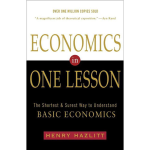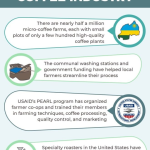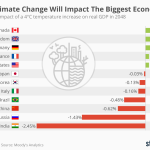Personal preferences play a crucial role in shaping our choices and identities, revealing deeper elements of consumer behavior. Behavioral science insights indicate that our likes and dislikes are often influenced by social norms and the environments we inhabit. For instance, the music we cherish often reflects the culture we grew up in, especially during formative years, while our choices in products are frequently swayed by familial trends and peer influences. This complex interplay of preferences and identities highlights how our tastes may not be as unique as we believe—they are molded by numerous external factors. Understanding the nuances of personal preferences can help decode individual behaviors and preferences in various contexts, enriching the conversation around what drives consumer choices and loyalty.
The concept of individual tastes and inclinations, often referred to as preferences or affinities, underscores the decisions we make and the identities we express through our choices. These inclinations shape our consumer habits, reflecting broader societal norms and personal experiences that contribute to who we are. Behavioral insights show that our preferences are not only personal choices but are also significantly influenced by external social contexts. Thus, recognizing how preferences tie into our identities allows us to better navigate the complex landscape of consumer behavior and market dynamics.
The Role of Social Norms in Shaping Preferences
Social norms play a crucial role in shaping our preferences and identities. Behavioral scientists have demonstrated that the choices we make, often perceived as deeply personal, are frequently influenced by the environment around us. For instance, when we see our friends favoring a particular pizza place or wearing certain brands, we unconsciously adopt similar preferences, aligning our choices with social expectations. This phenomenon can create a perception of authenticity in our choices, while in reality, it reflects our compliance with societal norms.
Research reveals that social influences can significantly dictate our consumer behavior. From the brands we choose to the products we prefer, external factors like family upbringing and peer pressure can subtly dictate our tastes. This influence extends across various product categories, suggesting that our culinary, fashion, and tech preferences are often more reflections of our social connections than individual inclinations. Thus, understanding the impact of social norms is essential for comprehending how preferences are formed.
Influence of Personal Preferences on Consumer Choices
Personal preferences are integral to our decision-making processes, influencing the products we buy and the brands we support. However, these preferences are often not as singular as we believe. They evolve over time and are shaped by experiences, exposure, and even the opinions of others. For example, while one may think they have a unique taste in wine, their choices can often be swayed by the prevailing sentiments within their social circles, hinting at a complex interplay between personal agency and social influence.
It’s important to recognize that our preferences, while personal, can be molded by various factors, including advertising and social media. The increasing sophistication of marketing strategies takes advantage of personalized consumer profiles to cater to these preferences. This targeting can enhance the perception of personal preference but can also steer individuals towards choices they might not have made independently. Understanding this dynamic is pivotal for consumers as it highlights how deeply intertwined personal preferences are with broader consumer behavior.
Understanding Consumer Behavior through Behavioral Science Insights
Behavioral science offers profound insights into consumer behavior, revealing how psychological factors shape our choices in the marketplace. One critical aspect is the idea of switching costs, which explores how easy or difficult it is to change a preference. For instance, moving from one technology platform to another may involve significant effort and adjustment, causing consumers to hesitate in altering their long-standing preferences. This concept affects not only technology switches but also daily purchases like groceries or fashion.
Another insight from behavioral science is the concept of ‘anchoring,’ where initial exposure to certain products can set a benchmark against which subsequent decisions are measured. For example, if a person encounters a premium bottle of wine first, their future selections may be influenced by that initial taste, even if they later discover more affordable options. These behavioral insights underscore that consumer choices are rarely the product of pure preference but are rather an intricate blend of psychology and context.
The Intersection of Identity and Preference Formation
Preferences are often a reflection of our identities, which are shaped by a multitude of factors including culture, upbringing, and social circles. This connection between identity and preference is evident in how certain brand choices can serve as symbols of self-expression. For instance, selecting eco-friendly products may signal a consumer’s commitment to environmental sustainability, aligning their purchasing behavior with their personal values and public image.
The interplay of identity and preference is also visible in the evolution of tastes over time. As individuals grow, their identities can change, leading to shifts in preferences. A teenager might prefer pop music reflective of their social group, whereas an adult could gravitate towards classical or indie genres that resonate with their matured identity. As such, understanding the evolution of preferences through the lens of identity provides valuable insights into both personal and market trends.
Social Influence and Its Impact on Preferences
Social influence can significantly affect our preferences, often without our conscious awareness. These influences manifest in various ways, from familial traditions that dictate our culinary choices to peer suggestions that shape our fashion sense. The psychology behind this is rooted in our inherent desire to fit in and be accepted by others, which can lead to a phenomenon known as ‘preference conformity.’ This shows how deeply embedded social norms are in our decision-making processes.
Moreover, the rise of social media has amplified the impact of social influence in shaping consumer preferences. Online platforms create an environment where brands are not just marketed through traditional channels but also through influencers and social proof. This can create a feedback loop where individuals might adopt a preference simply because it is popular within their social network, highlighting the complexity of consumer behavior and the often unnoticed roles of social dynamics.
How Context Shapes Our Product Choices
The context within which we make decisions can heavily influence our product choices, demonstrating the fluidity of preferences. Situational factors—such as marketing strategies, mood, or even temporal aspects like seasons—can all play a role in shaping what we choose to buy. For instance, promotional sales during the holidays can tilt consumer preferences towards specific brands or products, overshadowing more personalized inclinations.
However, context doesn’t solely pertain to immediate situations. Long-term contexts, including socio-economic status and cultural background, also play critical roles in shaping preferences. These factors contribute to how individuals perceive brands and products, often leading to collective tendencies within certain communities. Thus, understanding the context behind choices provides deeper insights into consumer behavior and the factors that contribute to preference formation.
The Randomness of Preference Development
The seemingly arbitrary development of preferences raises intriguing questions about the nature of consumer choice. Research indicates that many individuals hold firm beliefs about their preferences but often fail to recognize how much randomness has shaped those beliefs. For example, a person’s ‘favorite’ pizza place is often simply the result of convenience rather than a careful evaluation of quality. This randomness highlights the complexity of consumer behaviors and suggests that many choices are not as deliberate as we might assume.
Moreover, this randomness can lead to consumer biases, where people justify their choices post-factum, believing that their preferences are grounded in solid reasoning. However, behavioral studies show that often, they are influenced more by situational context or subconscious biases than rational evaluation. Recognizing this randomness can empower consumers to make more informed decisions rather than merely following perceived preferences.
Navigating Brand Loyalty and Changing Preferences
Brand loyalty is a fascinating aspect of consumer behavior, often viewed as a testament to personal preferences. However, this loyalty can falter when factors like quality, price, or brand perception change. Switching from one brand to another can often be fraught with challenges, especially when individuals have invested in a particular brand identity over time. Understanding the interplay of loyalty and disruption is essential for consumers trying to maintain or shift their preferences.
Additionally, the modern marketplace has made it easier for consumers to explore new brand options without the significant switching costs associated with more substantial products, like technology. For instance, in fashion, consumers can easily experiment with new brands without a hefty price tag, leading to a more fluid preference landscape. This ongoing dynamic of brand loyalty versus exploration emphasizes the need for businesses to stay attuned to changing consumer preferences and the psychological factors at play.
The Psychological Underpinnings of Consumer Choices
Understanding the psychological mechanisms behind consumer decisions is crucial for navigating the complexities of preference formation. Cognitive biases, such as the ‘bandwagon effect,’ show how social conformity can significantly impact what individuals perceive as their preferences. When a product gains popularity, the perception of its value can shift rapidly, causing consumers to alter their preferences to align with group behavior.
Furthermore, behavioral insights suggest that consumers are often unaware of the cognitive biases influencing their decisions. This lack of awareness can lead to a strong belief in the originality of their preferences, even when they’re primarily shaped by external factors. For marketers and brands, recognizing these psychological underpinnings can guide strategies that resonate more effectively with consumer behavior, ultimately influencing purchasing decisions.
Frequently Asked Questions
How do social norms influence personal preferences?
Social norms play a crucial role in shaping personal preferences by creating benchmarks for what is considered acceptable or desirable within a group. These norms can affect consumer behavior, as individuals often align their choices with those around them to feel a sense of belonging. For example, preferences in fashion or cuisine are frequently influenced by peer behaviors and societal standards, leading to the development of group-specific tastes.
What impact do parental preferences have on personal choices?
Parental preferences significantly influence personal choices, particularly in early development stages. A person’s choices in everyday items like food brands, music, and even hobbies are often rooted in the preferences exhibited by their parents. This transference of preferences reinforces bonds and establishes identity, creating a pattern of consumer behavior that aligns closely with family values and norms.
How do our personal preferences evolve over time?
Personal preferences evolve as individuals encounter new experiences and cultural influences. Major life events, such as moving to a new city or entering a different stage of life, can lead to shifts in taste. Additionally, exposure to new social environments and changing social norms may prompt reevaluation of previous preferences, making them dynamic rather than static across different contexts of identity.
What role does behavioral science play in understanding consumer behavior?
Behavioral science offers insights into consumer behavior by exploring how emotions, cognitive biases, and social influence affect decision-making processes. Understanding the psychological factors behind preferences helps marketers design strategies that resonate more deeply with consumers, ultimately affecting their choices in products and brands. This field underscores that preferences are often shaped by external stimuli beyond individual logic.
Can personal preferences truly reflect our identities?
While personal preferences often reflect certain aspects of our identities, they can simultaneously be influenced by external factors like marketing and social interactions. A consumer’s choices in brands, music, or lifestyle may project specific identity traits, but these choices can also be manipulated by societal expectations and advertising, leading to preferences that don’t fully encapsulate true self-identity.
Are personal preferences difficult to change based on switching costs?
Yes, personal preferences can be challenging to change due to switching costs that vary by category. High switching costs, such as transitioning from one technology platform to another, often deter individuals from making changes. Conversely, categories with low switching costs, like clothing brands or food choices, allow for more fluid adjustments in preferences, resulting in a more adaptable consumer behavior.
How do social media profiles affect our personal preferences?
Social media profiles can significantly impact personal preferences by shaping perceptions of identity. People often curate their online presence to reflect who they wish to be perceived as, leading to a preference for brands and products that align with this constructed identity. Marketers leverage this connection by targeting individuals with ads that resonate with their online personas, reinforcing specific consumer behaviors.
| Key Point | Explanation |
|---|---|
| Influence of Social Norms | Our preferences are shaped significantly by social norms and the choices of those around us. |
| Development of Preferences | Different categories show varied development times; for example, music tastes form in adolescence while car preferences develop later. |
| Parental Influence | Parental choices often shape our personal preferences, such as the brands of food we consume. |
| Attitude vs. Choice | There is a reciprocal relationship between attitudes and product choices; sometimes choices shape attitudes. |
| Impact of AI | AI tools help identify less obvious preferences and drive targeted advertising, influencing consumer choices. |
| Cultural Differences | Preferences are often influenced by local culture and social circles, resulting in fashion and taste variations. |
| Switching Costs | Changing preferences often depends on the associated costs of switching to another option, varying from low to high. |
Summary
Personal preferences can be heavily influenced by a variety of factors, including social norms and cultural contexts, making them less original than we may believe. Understanding how these external influences shape what we like helps us critically analyze our tastes and perhaps even discover new ones. Whether it’s music, food, or fashion, acknowledging these external factors allows for a richer appreciation of our preferences.










